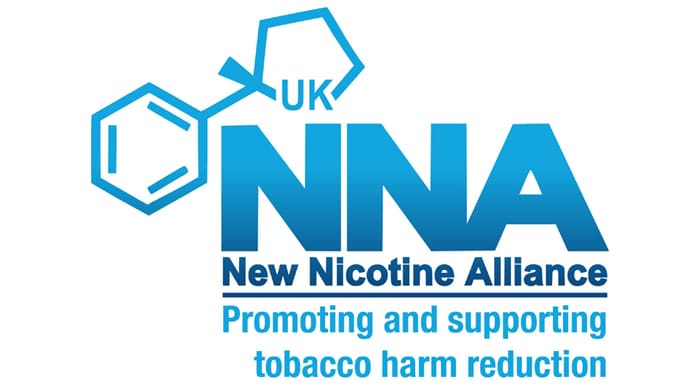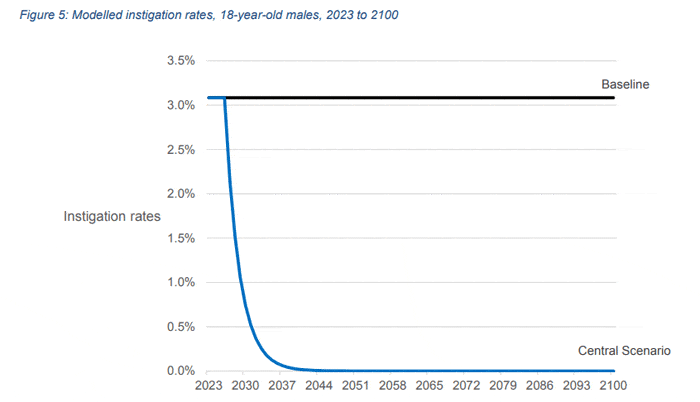Following the UK General Election, on Friday 5 July, Wes Streeting MP was appointed Secretary of State for Health and Social Care.

The NNA (New Nicotine Alliance) have written a letter to Wes Streeting on the new government’s approach to smoking and vaping. They are urging parliament to consider positive results of safer nicotine alternatives in adults and how the benefits can be capitalised on.
 You can view the full letter here or see the contents below.
You can view the full letter here or see the contents below.
Press Release
Wes Streeting MP
Secretary of State for Health and Social Care
Department of Health and Social Care
39 Victoria Street
London SW1H 0EU
11 July 2024
Dear Secretary of State,
The new government’s approach to smoking and vaping: pause and get it right
Congratulations on your appointment. You face immense challenges, but there are also great opportunities to prevent disease, save lives, and improve health and well-being.
The New Nicotine Alliance represents current and future consumers of low-risk alternatives to cigarettes, such as vaping products, nicotine pouches, and smokeless and heated tobacco. We have no relevant conflicts of interest. As representatives of the stakeholders with the most at stake, we wish to offer some advice on approaching the issue of tobacco and vaping.
We warmly welcome the government’s mission “to reduce preventable illness and cut health inequalities” and the manifesto pledge to a “renewed drive to tackle the biggest killers.” Smoking remains the biggest of the killers for which there are clear and underused responses. Reducing smoking will address health inequalities, reduce burdens on the NHS, and ease some of the painful financial burdens of smoking. The highest priority for policy in this area is reducing smoking among the 6.4 million adults who currently smoke and avoiding relapse to smoking among the 4.5 million adults who currently vape (ONS, 2023). The previous government’s policy does not have that effect.
While we agree with the new government’s broad policy aims, we believe that simply continuing with the policies and legislation of the previous government will not meet the new government’s aspirations, underserve a public that deserves better options and may do more harm than good. We advise you to pause and take stock. The main issues are as follows:
- The Bill’s anti-smoking measures will have little effect. According to the Impact Assessment, the former Prime Minister’s signature measure, the “smoke-free generation”, will not even begin to improve health and the NHS until 2044 [see: Impact Assessment, 178] and only if we accept highly implausible assumptions about its effectiveness and equally implausible assumptions about what would happen without it [see: Impact Assessment, 165, Figure 5 – reproduced below]. Alternative nicotine products will solve the problem of smoking in the generations born after January 2009 with little or no harm to the user. Policy should focus on adult smokers born well before 2009.
Figure 5 - The anti-vaping measures could easily have a net harmful effect. The critical at-risk population is adult smokers, especially those with low socioeconomic status or other forms of disadvantage (homeless, substance use, poor mental health status, etc). For the millions of adults in this category, vaping and other smoke-free options offer a practical route out of smoking without demanding that they also quit nicotine. These products work by appealing to people who smoke as consumer alternatives to cigarettes. Cigarettes and vapes function as substitutes, and it follows that restrictions on one can increase demand for the other. Excessive regulation or taxation of vapes will trigger three main responses: (i) behaviour change, such as reduced switching from smoking to vaping or increased relapse to smoking, defeating the objective of the legislation; (ii) illicit trade in the vapes adults want, nourishing criminal networks, and putting young people into risky contact with crime; and (iii) user and commercial workarounds, such as home mixing of flavours, which can involve rogue ingredients and inadequate hygiene. A further problem with excessive regulation (plain packaging, point of sale invisibility, high taxation, flavour bans, alarmist warnings) is that it also functions as implicit risk communication and plays into unwarranted fears about switching from high-risk to low-risk products.
- A more pragmatic approach to youth vaping is necessary. Much of the concern about youth vaping is understandable and demands a response. However, we should recognise that for some youth, vaping is an alternative to smoking and hence beneficial. For others, it will be a matter of occasional youthful experimentation, probably short-lived, and hence of little substantive public health concern. The more intensive users are far more likely to be those who would otherwise have smoked. It is important not to separate adults and adolescents as though they have no stake in each other’s welfare. Parental smoking can have a knock-on effect on kids through rolemodelling, financial burdens, air quality, income loss, illness, death, and grief. Young people benefit significantly from adults in their lives quitting smoking.
- The response to youth vaping should have five main elements. We stress that the greatest danger to youth is the development of criminal illicit supply networks that will supply anything to anyone of any age and recruit young people as sellers. We suggest the following:
a. A lawful market. The goal should be a proportionately regulated market that meets the demands of adult smokers and vapers with acceptable risks and consumer protection safeguards. This is what consumers and most legitimate businesses want. This is the best way to avoid the development of an illicit vape market or increases in smoking.
b. Age-secure retailing. We can see a case for raising the age of sale for smoking products to 21 and believe this should be tried and evaluated before extending this age limit indefinitely into adulthood. Once we have an age-of-sale regime, it must be secure, enforced and backed by instruments to make it work. Notably, this means a licensing regime with fines, suspension and disbarring options, and licensing conditions that support responsible retailing. This is missing from the Tobacco and Vapes Bill and is a significant shortcoming.
c. Responsible marketing. Adult vapers and smokers generally support controls on the use of childish imagery, comical product names, and references to youth-appealing brands. The Committee on Advertising Practice already has a code that covers inappropriate advertising. This could be extended to packaging and branding and linked to the registration process.
d. A focus on irresponsible vape flavour descriptors. A special case of responsible marketing (c above) is the naming and imagery associated with flavours. This should generally be sedate and descriptive, not jokey, frivolous or otherwise appealing to youth. The government should not ban particular flavours; it should only regulate their descriptions and, if necessary, control toxic ingredients. Diverse flavours are an essential element of the vaping experience and why they successfully displace smoking. Evaluation evidence from flavour bans in the United States suggests they lead to an increase in smoking.
e. Candid and truthful communication. The NHS has done very well in explaining vaping to adults with honest, science-based advice and guidance (NHS). The National Centre for Smoking Cessation and Training has led the world in giving sound, actionable advice to healthcare practitioners and public health specialists, working closely with consumers (NCSCT). It is essential for both adult and adolescent public health that this work continues. - Consumer protection and confidence in low-risk alternatives should be the primary goal of regulation. A government interested in results rather than simplistic crowd-pleasing measures should sustain a relentless focus on reducing smoking among the 6.4 million adults who already smoke. The fastest way to do this is to increase confidence in switching from high-risk cigarettes to low-risk alternatives to cigarettes, including vapes, pouches, snus, and heated tobacco. This will be achieved by proportionate consumer protection regulation to control chemical, mechanical, thermal and electrical safety risks, ensure responsible marketing and packaging, and communicate both risks and opportunities presented by these products.
- Align fiscal policy with public health. The UK has systematically raised the price of smoking through excise taxes. This may have had some success in reducing smoking. However, for those who continue to smoke, the tax is financially painful and highly regressive and takes a significant bite out of the household budget of the poorest people. We believe there is an ethical obligation to promote safer and cheaper alternatives to smoking as a flanking measure to such an aggressive policy on cigarette taxation. In addition, we can see no case for the vaping products levy, which is essentially a harsh tax on quitting smoking and will drive users to illicit markets in vapes or tobacco. [See: NNA response to the Vaping Products Duty].
In his acceptance speech outside Downing Street, Sir Keir Starmer said:
“You have given us a clear mandate and we will use it to deliver change, to restore service and respect to politics, end the era of noisy performance, tread more lightly on your lives and unite our country.” (Guardian).
Smokers and vapers would like the government to tread more lightly on their lives. They want to see public health policy work by consent rather than coercion and for the government to be a respectful enabler, not a hectoring prohibitionist. A policy encouraging smokers to make their own choices to switch to safer products is respectful, ethical and pragmatic – and far more likely to work.
We would very much welcome a meeting to discuss your views on the opportunities and risks of tobacco harm reduction and our thoughts on what could be done by the new government. We are copying this letter to Andrew Gwynne and Sir Keir Starmer.
Yours sincerely
| Louise Ross Chair New Nicotine Alliance |
Clive Bates Voluntary Public Health Adviser New Nicotine Alliance |
Sarah Jakes Trustee New Nicotine Alliance |
| Mary Stamp Trustee New Nicotine Alliance |
Michelle Jones Trustee New Nicotine Alliance |
Bernice Evans Trustee New Nicotine Alliance |






